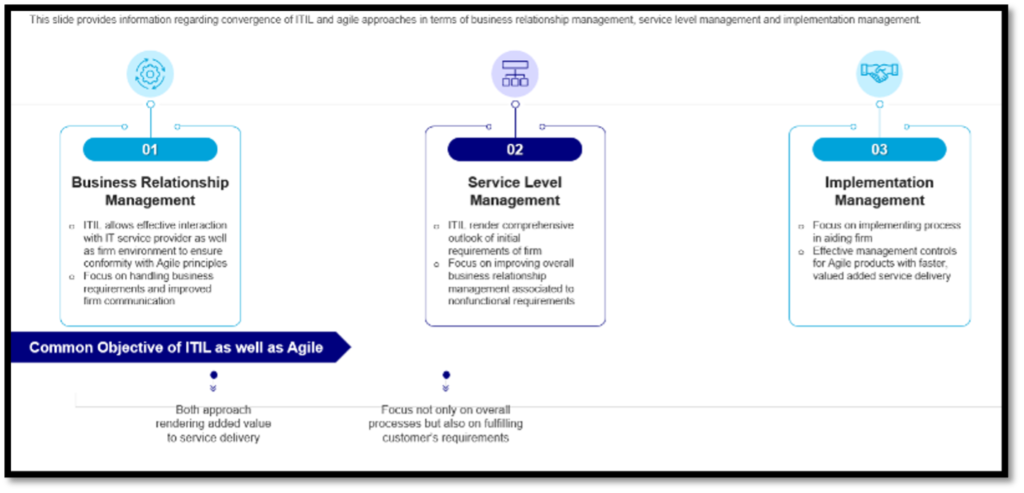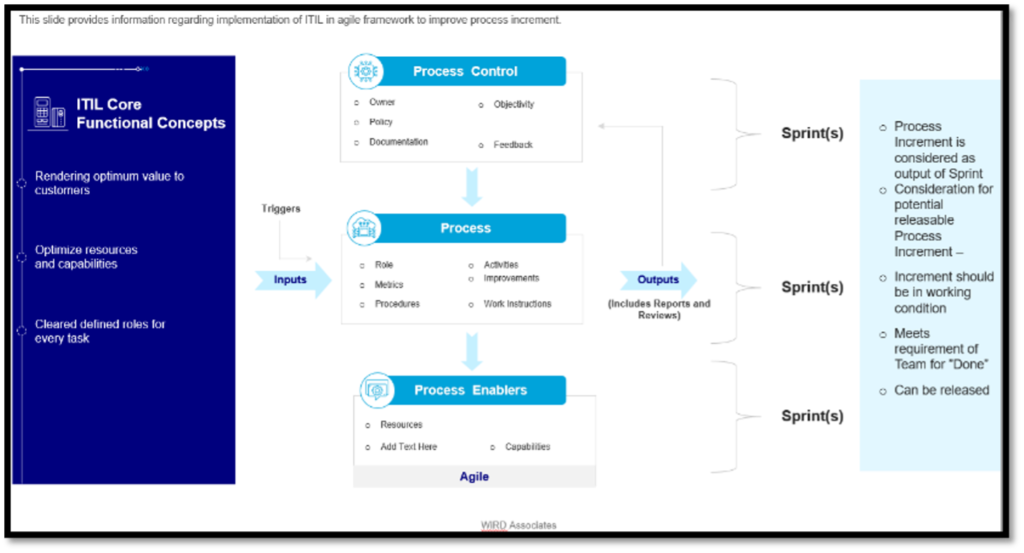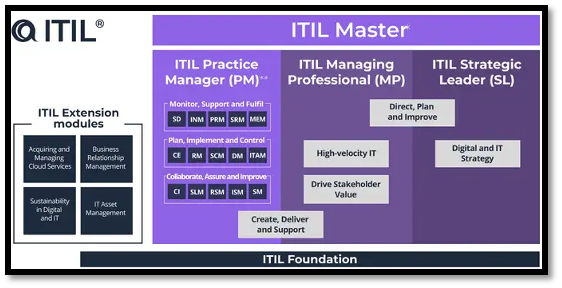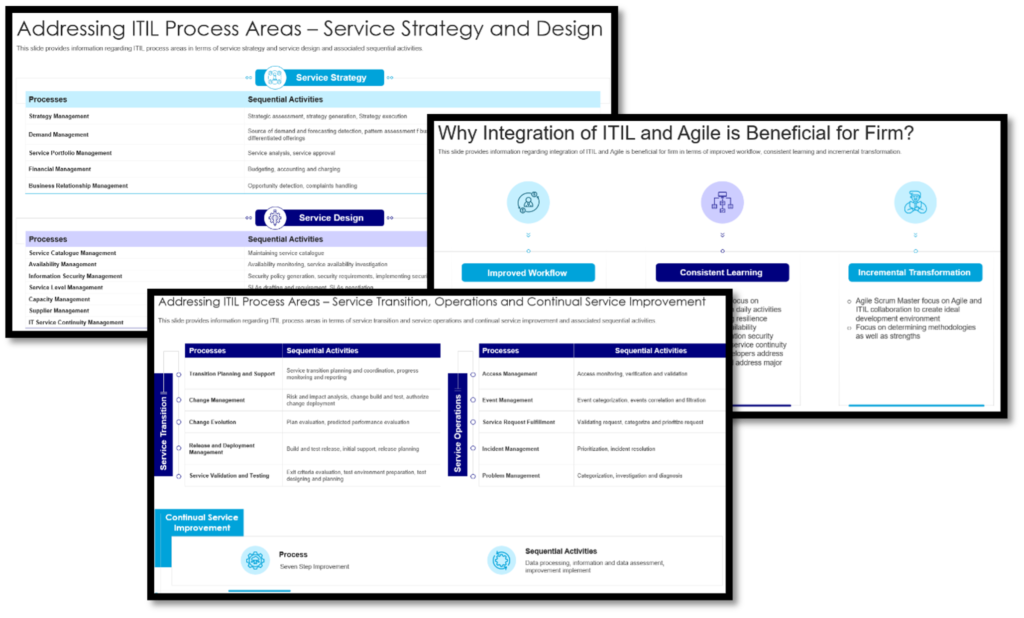
ITIL® and Agile are two different approaches that can be combined to achieve better results…
“ITIL provides a framework for reliable and quick service delivery with quality assurance while Agile ensures smooth delivery to the end customer.” – (Veritis) “Despite various approaches, ITIL® and Agile converge on various similar aspects such as focus on bringing results to provide added values to service delivery” – (Invensis)
Combining ITIL 4 and Agile best practices can help organisations solve their service management pain points. – (Axelos)
ITIL® 4 recommends in one of its guiding principles, “Progress Iteratively With Feedback”.
Gather everyone’s perspective and then choose the approaches that every stakeholder can agree on to deliver a combined, collaborative solution.” – (Axelos)
“In the role as a Service Management Lead, it’s about seeing things from multiple perspectives where possible – Facets are identified and clarified. These include DevOps, Agile project management and ITIL, with the latter focusing on improving co-creation of value between and across teams.” – (Axelos)
Referencing Axelos (the organisation managing ITIL®), companies are continuously looking at resolving their infrastructure- (and service-) management pain points. Solutions will come from multiple sources and arriving at the “Eureka” moment is key, The “Eureka” moment being the collaboration between people, the varying approaches they employ, and possibly diverging methods they use. Each method’s aim is achieving an outcome for a team, and this is based on identified pain points. The biggest aim is to find how value is generated while the issues are addressed, using the fixes that all the teams provide. ITIL plays a huge role in helping to manage the changes and keeping the objectives clear (Like a proverbial “sanity-checker”).
Combining ITIL and Agile can be challenging but it is possible. We suggest that organisations should start by identifying the areas where ITIL and Agile overlap and then focus on those areas. Organisations should use the ITIL framework as a foundation for their service management processes and then use Agile methodologies to improve those processes.
Benefits of combining ITIL® and Agile
Combining ITIL and Agile can bring varied benefits to several organisations.
The main benefits of converging ITIL® and Agile are improved capabilities in meeting customers’ needs:
- Enhanced and optimised workflow
- Continuous improvement across multiple spectrums
- reducing costs while increasing value
- improving core service delivery
- maintaining SLM (service level management)
- Incident Management
- Problem Management
- Change Management
- increasing and Improving customer satisfaction
- Improved reaction to feedback
- Continuous learning
Implementing ITIL® in an Agile framework

Organisations can implement ITIL® in an Agile framework by following these steps:
- Identify the areas where ITIL® and Agile overlap.
- Use the ITIL framework as a foundation for service management processes.
- Use Agile methodologies to improve those processes.
Organisations must focus on continuous improvement and collaboration between teams as illustrated above.

As can be seen from this blog, ITIL, if interpreted and applied correctly, can help to optimise any organisation’s journey to a fully-fledged digital business model in ways that are cost effective and highly efficient.
In WiRD’s experience, many organisations who have invested resources in ITIL, are only using a fraction of the wisdom and capabilities. It can be a very powerful enabler of digital transformation enabled by formal enterprise architecture. What has your experience been in this regard? How effectively is your organisation using its investment in ITIL? How are the ITIL resources applying themselves to continuously improve their environment. Service delivery remains the key component for generating value.
Our subsequent blogs will elaborate on ITIL key areas and concepts:

